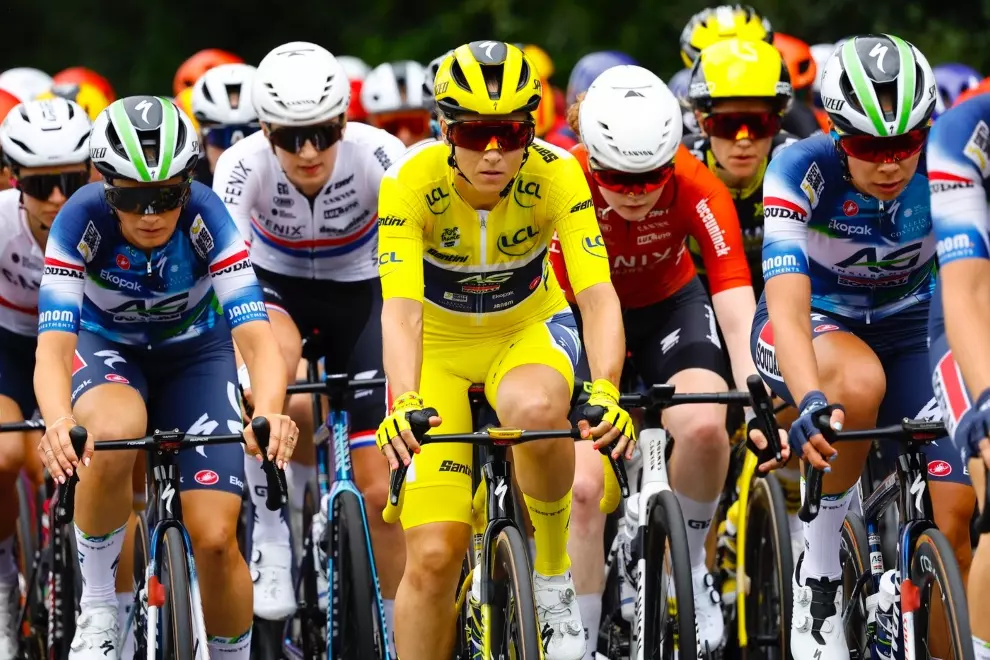Aero road bikes are not new – they’ve been available for more than a decade. Their original aim was to go as fast as possible in a straight line, thereby, however, sacrificing control and comfort. But with a UCI minimum bike weight limit of 6.8 kg, racers and the companies that build their bikes had to look beyond reducing grams to gain extra speed – which meant producing a racing bike that integrated aerodynamics with handling and ease of use. In any case, there is a growing belief in the sport today that reducing wind drag is more important than losing weight.

The fact that reigning road race world champion and five-time green jersey winner Peter Sagan rode the brand new Specialized Venge 2019 in the Tour drew a lot of attention. Specialized claims that “aerodynamic optimization is the most important thing we can do to make you faster”. To that end, it says that it used optimization software to create a ‘library’ of “thousands of tube shapes and analysed them based on aerodynamics, surface area, and stiffness”, resulting in the Venge 2019.
The Venge’s new frameset and modular cockpit were redesigned to reduce drag, with a new stem, dropped handlebar clamp and cables hidden beneath the stem and blocked from the wind by the handlebars. In addition, the bike’s head tube and fork were also redesigned for better aerodynamics, without – the company says – sacrificing stiffness in handling. And the bike is 460 grams lighter than its previous version. So, it was little surprise that Sagan won three Tour stages and easily claimed a sixth green jersey, to tie Germany’s Erik Zabel for the most points classification wins in Tour de France history.

The Cannondale SystemSix was also officially launched in the Tour de France run-up, with the company claiming that it is the fastest UCI-approved road bike in the world. Like the Venge, the SystemSix uses only disc brakes and features some classic aerodynamic features, such as lowered seat stays, shorter aero tubing and a fork crown that is integrated virtually seamlessly into the down tube. The SystemSix also has a chine on the down tube that, Cannondale says, redirects an upward flow of air from the back of the fork leg and channels it downstream, preventing it from interfering with the flow over the fork crown and head tube.
Cannondale also invested a great deal of research into the wheels. As the company says, “Since the front wheel is the leading edge of the whole bicycle, it sees the cleanest airflow. Therefore, it was is an important starting point for aerodynamic optimization.” Its HollowGram KNØT64 wheel’s wide profile enables the air flow from a wide tyre to cleanly “reattach” to the rim, thereby reducing drag. The shape of the wheel’s rim allows cyclists to run a large, 28mm tyre, with minimal increase in drag compared to a smaller, 26mm tyre.
Although it boasts an aerodynamically advanced bike model, the 2019 Propel Advanced Disc, the world’s largest bike manufacturer, Giant, did not introduce it at the 2018 Tour de France. The company says the Propel’s tube shapes were designed using wind tunnel data as well as computational fluid dynamics (CFD), which employs numerical analysis to solve fluid-flow problems and simulate the interaction of liquids and gases with boundary-defined surfaces.
An important aerodynamic feature of the Propel is a truncated ellipse aerofoil shape that is designed to reduce drag at a wider range of wind angles than traditional teardrop-shape frame tubing. In addition, the bike’s composite SLR AeroWheelSystem features different rim depths on its front and rear wheels “to minimize drag without compromising stability”, the company says. Aerodynamic gains were also a priority in the design of the bike’s seat post, handlebar and stem. For anyone interested in the research that goes into designing a Tour de France superbike, a look at the ‘SystemSix White Paper’ on the brand’s website should be illuminating – and go a long way to explaining why these racing bikes carry a price tag of $11,500 and more.




